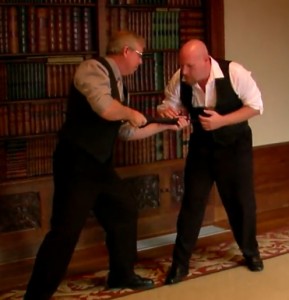- Originally published on the Bartitsu.org site on Saturday, 14th November 2009
- Advance notice of SWASH 2010, the flagship conference event of the British Federation for Historical Swordplay. The 2010 conference will take place on February 20 and 21 and will be held at the magnificent Royal Armouries Museum in Leeds, UK. The programme includes a significant emphasis upon the “antagonistics” (martial arts and combat sports) of the Edwardian period, as well as classes in the swordsmanship of the Medieval, Renaissance and Regency eras.
The Saturday schedule includes a lecture by Bethan Jenkins entitled Apaches, garrotters and roughs, oh my! – Ruffianism panics and their relation to historical defensive arts.
This will be followed by A caution to the gentleman about town – a demonstration of various dastardly night attacks, in which Dr. Milo Thurston, Ian MacIntyre and James Marwood will present various techniques of robbery attributed to the Apaches (Parisian gangsters), based upon the writing of French self defence author Emile Andre.
This presentation will followed by A brief introduction to Edwardian antagonistics – cane, savate, pugilism and ju-jitsu presented by Dr. Milo Thurston, Ian MacIntyre and James Marwood.
On Sunday Mark Donnelly will present a lecture entitled Kernoozers and Antiquarian Antagonistics being an informative discourse regarding Hutton, Castle, Burton, Allanson-Winn, Barton-Wright and the Victorian foundations of contemporary researches.
Surely a conclave not to be missed!
















